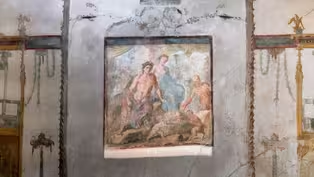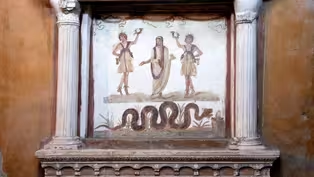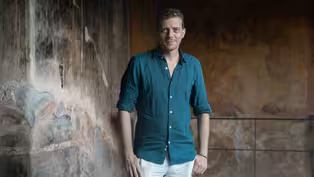
A Deadly Pyroclastic Flow Hits Pompeii
Clip: Episode 3 | 2m 24sVideo has Closed Captions
Volcanologist Professor Chris Jackson discovers evidence of the deadly pyroclastic flow.
Volcanologist Professor Chris Jackson reveals the power of the deadly pyroclastic flow that had swept through Pompeii, killing everything in its path. He identifies the tell-tale signs of the killer pyroclastic flow on a wall of pumice and ash.
Problems playing video? | Closed Captioning Feedback
Problems playing video? | Closed Captioning Feedback

A Deadly Pyroclastic Flow Hits Pompeii
Clip: Episode 3 | 2m 24sVideo has Closed Captions
Volcanologist Professor Chris Jackson reveals the power of the deadly pyroclastic flow that had swept through Pompeii, killing everything in its path. He identifies the tell-tale signs of the killer pyroclastic flow on a wall of pumice and ash.
Problems playing video? | Closed Captioning Feedback
How to Watch Pompeii: The New Dig
Pompeii: The New Dig is available to stream on pbs.org and the free PBS App, available on iPhone, Apple TV, Android TV, Android smartphones, Amazon Fire TV, Amazon Fire Tablet, Roku, Samsung Smart TV, and Vizio.
Buy Now
Providing Support for PBS.org
Learn Moreabout PBS online sponsorshipNARRATOR: As dawn broke, Pompeii's luck ran out.
PROF. CHRIS JACKSON: The fourth pyroclastic flow headed southeastwards towards Pompeii.
The air would have been thick with the smell of sulfur dioxide, a very strong eggy smell.
If they thought ash and pumice raining on their roofs was bad, this was something else entirely.
ERUPTION GRUMBLES Anybody who was still alive and had not been killed by a collapsing roof, would have seen almost like a cloud coming down the volcano towards them.
It would have been almost imperceptible.
It was so far away how fast-moving it was.
ERUPTION GRUMBLES NARRATOR: As the super-heated avalanche crashed into the city, it killed and buried everything in its path.
Today, we can see evidence of the power and ferocity of these deadly pyroclastic flows.
PROF. CHRIS JACKSON: These rocks here do tell us an important part of the story of the eruption.
In the lower part of this exposure of rock, we're seeing these pumice-rich ash deposits from the volcano during the earlier phase of the eruption.
But here we have quite a different rock type.
This rock here has these really obvious lines, these sub-horizontal lines within it, called lamination.
And they form by fast-moving flow.
So, flows that are moving so fast that you can't build ripples or little dunes, you actually just flatten the sediments out, and these rocks were deposited by one of these pyroclastic flows.
And it's haunting to think that a seemingly inconsequential one-meter-thick package of rock caused such chaos and death.
Because even if you were able to climb out of this lower package of ash, I'd have been up to my chest and my head would have been sticking out of it.
If I was lucky and I was strong, I could have clambered up to the top of that layer.
But then suddenly the surge, the pyroclastic flow, would have just swept me off my feet, and that would have been the end of me.
ERUPTION GRUMBLES
Video has Closed Captions
Clip: Ep3 | 3m 18s | Pompeii’s director, Dr. Gabriel Zuchtriegel, reveals painted frescoes on black walls. (3m 18s)
Video has Closed Captions
Clip: Ep3 | 2m 28s | In the wealthy house, archaeologist discovers two three-dimensional snakes. (2m 28s)
Video has Closed Captions
Preview: Ep3 | 30s | In Pompeii, the biggest dig in a generation reaches its climax with thrilling discoveries. (30s)
Providing Support for PBS.org
Learn Moreabout PBS online sponsorshipSupport for PBS provided by:














